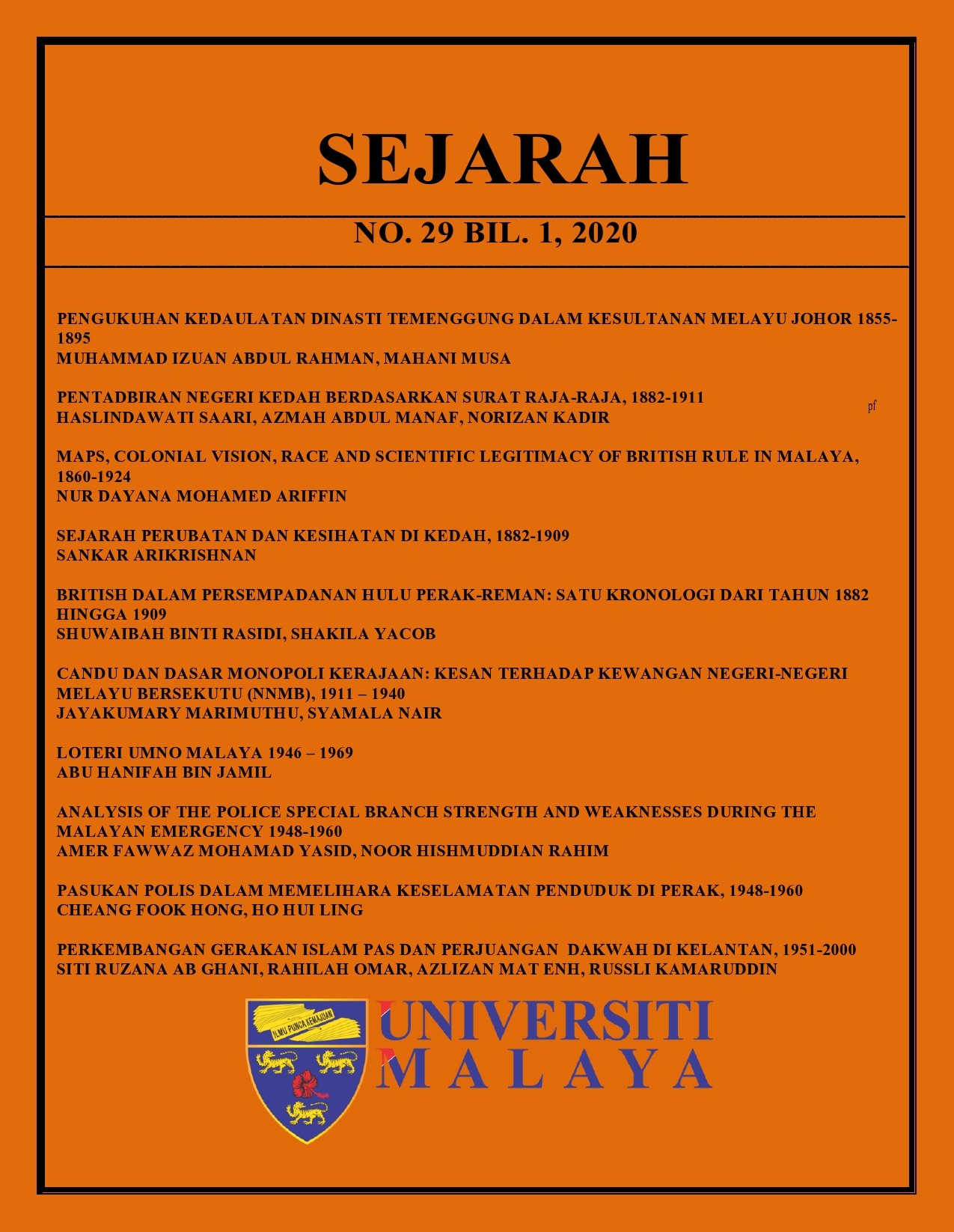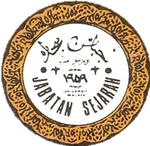MAPS, COLONIAL VISION, RACE AND SCIENTIFIC LEGITIMACY OF BRITISH RULE IN MALAYA, 1860-1924
DOI:
https://doi.org/10.22452/sejarah.vol29no1.3Keywords:
Map, Cartography, British Empire, Malaya, Colonial ScienceAbstract
The maps drawn by the British colonial administrators in Malaya places pre-colonial understanding of territories into colonial boundaries; boundaries that were, on many aspects, defined by the economic, political and social interests of the colonial entity. Underlying this colonial cartographic vision of Malaya is an implicit rationale built under the banner of science. Mapping was understood by the British as a scientific pursuit, and maps as scientific artifacts. This study is using qualitative method suah as archieval data. The findings show that the maps of Malaya were construed through British scientific rationale, and in turn, this allowed the British to not only politically impose their vision of Malaya onto its inhabitants, but additionally, through the production of scientifically ideal (here read as ‘reasonable’, ‘empirical’ and ‘rational’) methods and artifacts had made colonial boundaries as legitimate, neutral and acceptable divisions. Therefore, other elements that has been directly or indirectly affected by British maps, such as racial distribution and notions of economic development can be argued as equally legitimate and neutral as well. While maps inform us of the socio-political order of British Malaya, it can also provide a new terrain for analysis—the relationship between science, colonialism and the objectification of colonial territories and peoples. This paper focuses on this line of analysis by looking at the visual imagination of Malaya through maps created by the British, particularly on the population, i.e., racial categorization and distribution, and how colonial ideals and imagination found indisputable grounds through science.
Received: 16 January 2020
Reviewed: 23 January 2020
Accepted: 10 May 2020


